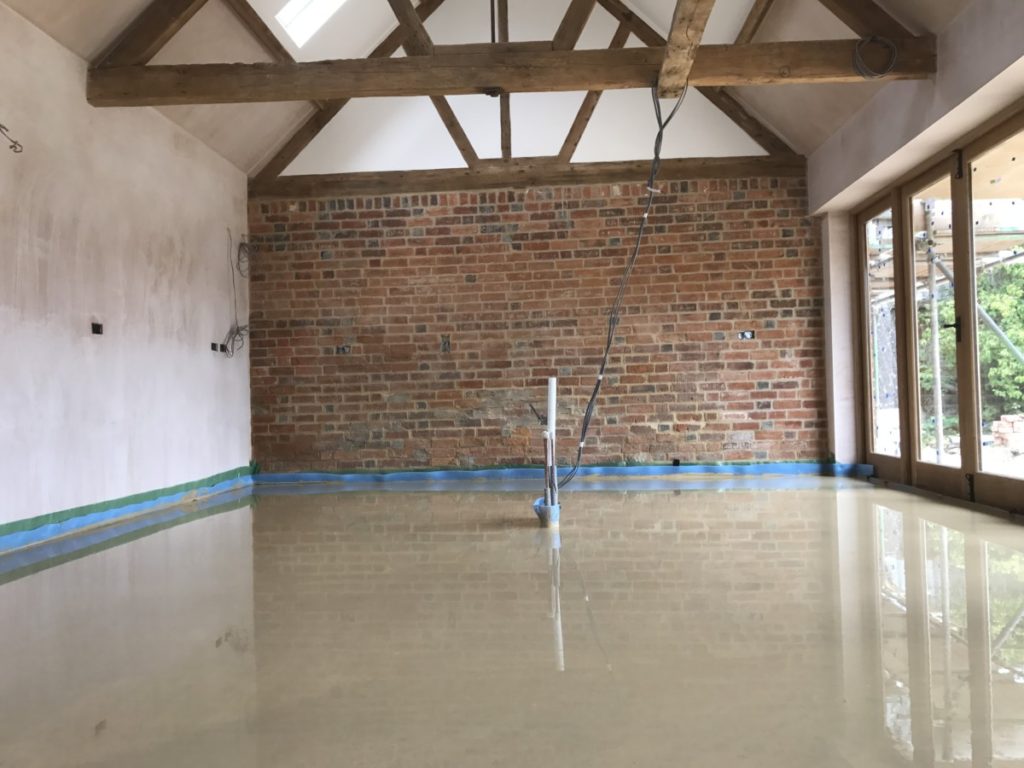Just to begin with, it isn’t always necessary to screed a concrete floor, depending upon the use of the building. For example, if you are building a warehouse, you don’t need a “pretty” looking floor surface. You just need a floor which is practical and can withstand heavy traffic including, possibly, forklift trucks. So in this instance, a floor screed would not be necessary.
However, in the case of the vast majority of buildings, a floor screed is required, and this could be for one or two reasons. Probably the most common reason is that a concrete subfloor is never going to be level enough to have the final flooring fitted to it, and a screed laid on top of the concrete should provide a surface that is level enough for the final flooring to be affixed.

This is particularly important if something such as tiling is going to be used. The surface must be as level as possible. If it is not, then the tiles can start to crack as people walk on them, and that is going to be a costly problem to fix.
Screed is also used as a surface on which to lay the flooring when insulation is fitted, and, in addition, in the case of underfloor heating being installed.
For many years, screed has been made of sand and cement, and to quite an extent it still is. However, in recent years, liquid screeds have become extremely popular because of the distinct advantages they have over and above a sand and cement screed.
Not the least of the benefits of liquid screed, or floor compound in Newbury, or for that matter anywhere, is a simple fact that it is, indeed liquid. A sand and cement screed has traditionally been mixed on-site in a cement mixer. Apart from any other consideration, there will be no consistency in the mix, because each batch will vary from the previous one. The screed is barrowed to where it is required and is then levelled by a labourer on hands and knees using a trowel.
As you can imagine, this is a very lengthy process: It is not likely that more than 100 square metres a day could be laid this way. It is also very tiring for the labourer.
By contrast, our liquid screed at UK Screeds is delivered to site ready mixed and is pumped into position using a pump and a long hose. This is considerable faster, and indeed we can sometimes lay as much as 2,000 square metres in a day.
The liquid screeds which we provide are composed not of sand and cement, but sand and gypsum. They are known as anhydrite screeds because they use anhydrous calcium sulphate which becomes gypsum when mixed with water.
Another benefit of our liquid screeds is that they can be laid much thinner than sand and cement. Thus, they use less material. The depth of screed is particularly important when underfloor heating is being installed because the heat travels through the thin screed faster than through a thicker sand and cement mix. Furthermore, our anhydrite screed has heat transfer properties which are nearly double that of sand and cement, so less energy is required to heat the room to the same temperature. This means that anhydrite screed is more environmentally friendly because the energy savings go on for the life of the building. Anhydrite screed is better for the environment in another way also, because up to 36% of the content is recycled.
In addition, our liquid screeds completely cover the heating pipes leaving no gaps or voids. This is almost impossible to achieve with a sand and cement screed.
The drying time of our screeds is very quick. The surface will be ready to walk on within 24 – 48 hours. This means that other contractors who need to work on the site will not get delayed.
Liquid anhydrite screeds do produce a layer of particles on the surface as they dry, and this is known as laitance. This has to be removed before the final flooring is fixed, and we do this by sanding and then vacuuming the floor between seven and ten days after the screed has been laid.







